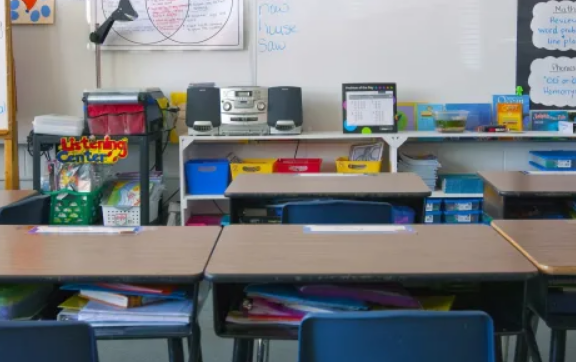
The proportion of students who go to schools with high or extreme levels of chronic absenteeism jumped from 26% in the 2017-2018 school year to 66% in 2021-22 school year, according to an analysis of government data from Everyone Graduates Center at Johns Hopkins University and Attendance Works. It’s not just one day of pretending to be sick while watching Judge Judy; to be considered chronically absent, a student has to miss at least 10% of school days. During the most recent surveyed year, about 14.7 million students (or 29.7%) fell into this category.
Pre-pandemic, absenteeism issues were largely based in high school, but this new research shows the crisis is now hitting elementary and middle schools—evidence of the pandemic’s toll on the school system, if you ask Hedy N. Chang, executive director at Attendance Works. It’s “a sign that the positive conditions of learning, that are critical to motivating students to attend, have been eroded at school,” Chang tells Fortune.
COVID was the last crack in a broken system
Indeed, the education sector is feeling the ripple effects from underpaying and overworking its employees. Dealing with remote teaching and a high cost of living on staggeringly low pay prompted many burned out teachers to quit, fueling a teacher shortage.
{snip}
“I’m seeing more educators, especially the younger ones, coming in and saying, ‘I’m not willing to put up with this,’” Joshua Morgan, a former teacher at a rural district, told The Associated Press. It’s gotten to the point where many teachers are priced out of living near the district where they teach as they can’t afford to navigate a difficult housing market.
It’s a crisis that’s been looming for years, as teachers have struggled to make ends meet and increasingly found themselves at the forefront of other national issues like gun safety and censorship regarding LGBTQ+ rights and critical race theory. The pandemic just pushed a system that was already at its breaking point even further.
“So much of [our system] is held together with duct tape and glue. When you have a scenario like COVID that really threatens the stability of even a high-functioning district, of course we’re going to see disproportionate impacts on those districts that were already teetering on a precipice of insolvency and instability to begin with,” Jess Gartner, founder of Allovue, a education finance technology company, told the Atlantic.
More funding for stronger relationships
The lack of investment in public schools and the shortage of educators has created a declining educational system. Testing scores have suffered in part as school districts struggle to bounce back from learning disruptions during remote schooling while dealing with teacher development and staffing issues, according to a study from the Center on Reinventing Public Education. And students have been missing school at record rates since they reopened during the pandemic.
{snip}
And some students have left the public school system entirely—enrollment in K-12 dipped by 1.2 million students during the 2021-2022 school year, separate research finds, particularly among kindergarten students and remote-only schools (some of these children turned to private schools or home-schooling instead).
To fix chronic absenteeism, the education experience itself needs more funding, Chang says. “We need target investments and efforts to strengthen the foundational building blocks available to all students that ensure they feel physically and emotionally healthy and safe at school as well as a sense of belonging and support,” she explains.
{snip}
“Every time I talk with a district that is making progress reducing chronic absenteeism, the single most common feature I hear about is that they use relationship building,” says Chang, who explains that these relationships can help motivate students or families that need help sharing their barriers in getting to school. But at the same time “relationship building also requires investing in the adults working in schools.”
(*) www.WhitePrideHomeSchool.com
* Original Article:
https://fortune.com/2023/11/18/students-missing-school-attendance-chronic-absenteeism-teacher-shortage/amp/


